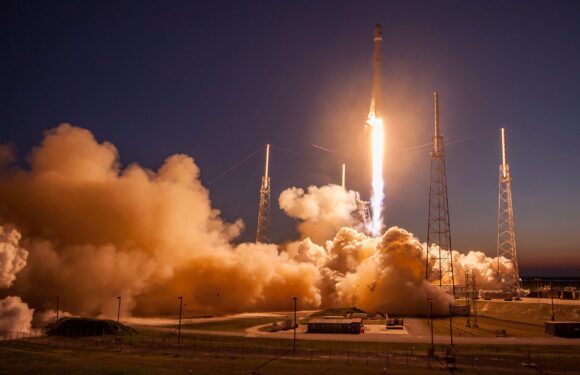A new proposed rule would require commercial space companies to clean up some of their junk.
The US Federal Aviation Administration Wednesday released a proposal to limit the uncontrolled reentry of a launch vehicle’s upper stage — the part of a rocket that typically takes a satellite to its intended orbit.
Under the rule, the FAA would give space companies five options for disposing of the part within 25 years of its launch, including sending it to an orbital “graveyard” or destroying it in the Earth’s atmosphere.
Space debris can cause collisions and potentially interfere with other objects providing services in space. The FAA said upper stages are of particular concern due to their size, mass and the uncertainty of where they will land. The FAA’s proposed rule comes as safety and industry officials grapple with how to handle the proliferation of satellites and other spacecraft crowding Earth’s low orbit.
The orbital environment around Earth has grown more crowded with every passing year. The number of active satellites has roughly quadrupled since 2019, thanks in large part to the multiple launches of Space Exploration Technologies Corp. Starlink satellites. The US Department of Defense is tracking more than 27,000 pieces of debris in Earth’s orbit, according to NASA, while there are millions more that cannot be tracked with operational sensors.
“If left unchecked, the accumulation of orbital debris will increase the risk of collisions and clutter orbits used for human spaceflight and for satellites providing communications, weather and global positioning system services,” the FAA wrote in a post on its website.
A 90-day public comment period will begin in the coming days after the proposed rule is published in the Federal Register.
Top photo: In this handout provided by the National Aeronautics and Space Administration (NASA), SpaceX’s Falcon 9 rocket makes a successful launch with the SES-9 communications satellite on March 4, 2016 in Cape Canaveral, Florida. (Photo by NASA via Getty Images)
Was this article valuable?
Here are more articles you may enjoy.


 Cyber Breach Affected 750,000 Canadian Investors, Regulator Says
Cyber Breach Affected 750,000 Canadian Investors, Regulator Says  What The Return of California’s ‘Death Discount’ Means for Litigation
What The Return of California’s ‘Death Discount’ Means for Litigation  The Return Period for An LA Wildfire-Scale Event May Be Shorter Than You Think
The Return Period for An LA Wildfire-Scale Event May Be Shorter Than You Think  Munich Re: Insured Losses From Wildfires, Storms and Floods Hit Record High
Munich Re: Insured Losses From Wildfires, Storms and Floods Hit Record High 